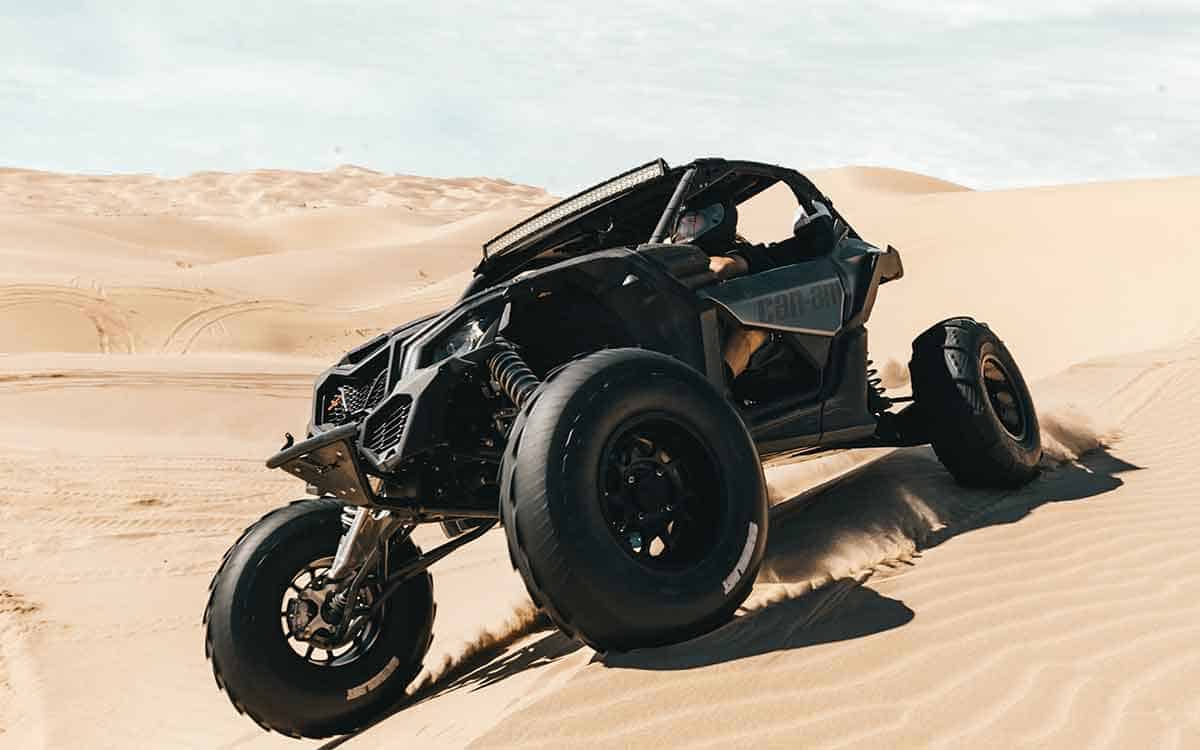When it comes to off-road vehicles, there are a few things that are essential for the driver and passengers to have a good time. There’s proper suspension, adequate ground clearance, and of course the right tires. When it comes to tires, there are a lot of different factors you need to consider. One of those is the air pressure in your tires.
In this article, we’ll discuss whether or not you need a low-pressure gauge for Rzr tires, types of low-pressure gauges, the best tire pressure for different terrains and provide some tips on how to choose the right gauge for your needs.
Keep reading to learn about low-pressure gauges and whether or not you need a low-pressure gauge for Rzr tires
Do You Need a Low-Pressure Gauge for Rzr Tires?
You might be wondering if you really need a low-pressure gauge for your Rzr tires before embarking on your adventure. The answer is. It depends on the terrain.
If you’re only going to be driving on well-maintained trails, then you probably don’t need a low-pressure gauge. However, if you’re planning on doing any off-roading, then you might want to consider getting a gauge.
If you’re driving on softer terrain, like sand, mud, or dunes, you’ll want to let some air out of your tires. This will give you more traction and prevent you from getting stuck. Without a low-pressure gauge, it can be difficult to know how much air to let out of your tires.
If you’re driving on harder terrain, like rocks or packed dirt, you’ll want to keep your tires at a higher pressure. This will prevent your tires from deforming and becoming damaged. A low-pressure gauge will help you ensure that your tires are at the correct pressure so that you don’t end up with a flat tire.
Now that you know about the pressure gauges be sure you make the right choice before setting off.
Types of Low-Pressure Gauges
There are a few different types of low-pressure gauges on the market, and they all have their advantages and disadvantages.
- Digital low-pressure gauges are typically more accurate than analog gauges. However, they can be more expensive.
- Analog low-pressure gauges are less expensive but not as accurate as digital ones. They’re also more difficult to read in low-light conditions.
If you’re going to be driving on softer terrain, we recommend getting a digital low-pressure gauge so that you can be sure your tires are properly inflated.
Best Rzr Tire pressure for different terrains
There are different types of Rzr tire pressure for each terrain. Here are the best Rzr tire pressure for the different terrains:
1. Best tire pressure for soft terrains
The best tire pressure for soft terrains such as sand, mud, or dunes is between 15 and 20 PSI. This will give you more traction and prevent you from getting stuck.
2. Best tire pressure for hard terrains
The best tire pressure for hard terrains such as rocks or packed dirt is between 25 and 30 PSI. This will prevent your tires from deforming and becoming damaged.
Remember to check your Rzr’s owner’s manual for the recommended tire pressure for your specific model.
When to Check Your Rzr Tire Pressure
You should check your Rzr’s tire pressure at least once a month, but it’s a good idea to check it before every ride. If you’re going to be driving on softer terrain, like sand, mud, or dunes, you’ll want to check your tires before each ride to ensure they’re at the correct pressure.
You should also check your Rzr’s tire pressure if you notice that your Rzr is handling it differently than usual. This could be a sign that one of your tires is low on air.
Tips for Choosing the Right Low-Pressure Gauge for Rzr tires
Now that you know whether or not you need a low-pressure gauge, when to check your tire pressure, and the best tire pressure for different terrains it’s time to take a look at how to choose the right one. Here are a few tips to help you select the best gauge for your needs.
1. Consider your budget.
Low-pressure gauges can range in price from $20 to $200. If you’re only going to be using your gauge occasionally, then you probably don’t need to spend a lot of money on a high-end model.
However, if you’re planning on doing a lot of off-roading, then you might want to invest in a more expensive gauge such as a no-loss gauge.
2. Choose the right type of gauge.
There are three main types of pressure gauges on the market: high, low, and no-loss. Consider your needs and choose the type of gauge that is best for you and the terrain.
3. Select a size that is easy to read.
Low-pressure gauges come in a variety of sizes. If you have trouble seeing small numbers, then you might want to select a larger model, but if your eyesight is as crisp and sharp and you also prefer a portable gauge, then you can go in for a small gauge.
4. Make sure the gauge is accurate.
It’s important to have an accurate gauge so that you can ensure your tires are at the correct pressure. Read online reviews to see what other people are saying about the accuracy of different models.
By following these tips, you will be able to choose the best low-presser gauge for Rzr tires. Do you have any tips to add? Let us know in the comments below!
Final thought
We hope this article answered the question, “Do you need a low-pressure gauge for Rzr tires?” If you’re planning on doing any off-roading, then we recommend getting a gauge so that you can ensure your tires are at the correct pressure.
Checking your Rzr’s tire pressure regularly will help extend the life of your tires and prevent flat tires.
Do some research to find the best low-pressure gauge for your needs and be sure to follow our tips for choosing the right model. With a little preparation, you’ll be ready to tackle any terrain that comes your way.
If you enjoyed this article, please share it with your friends or family members who might find it helpful.

